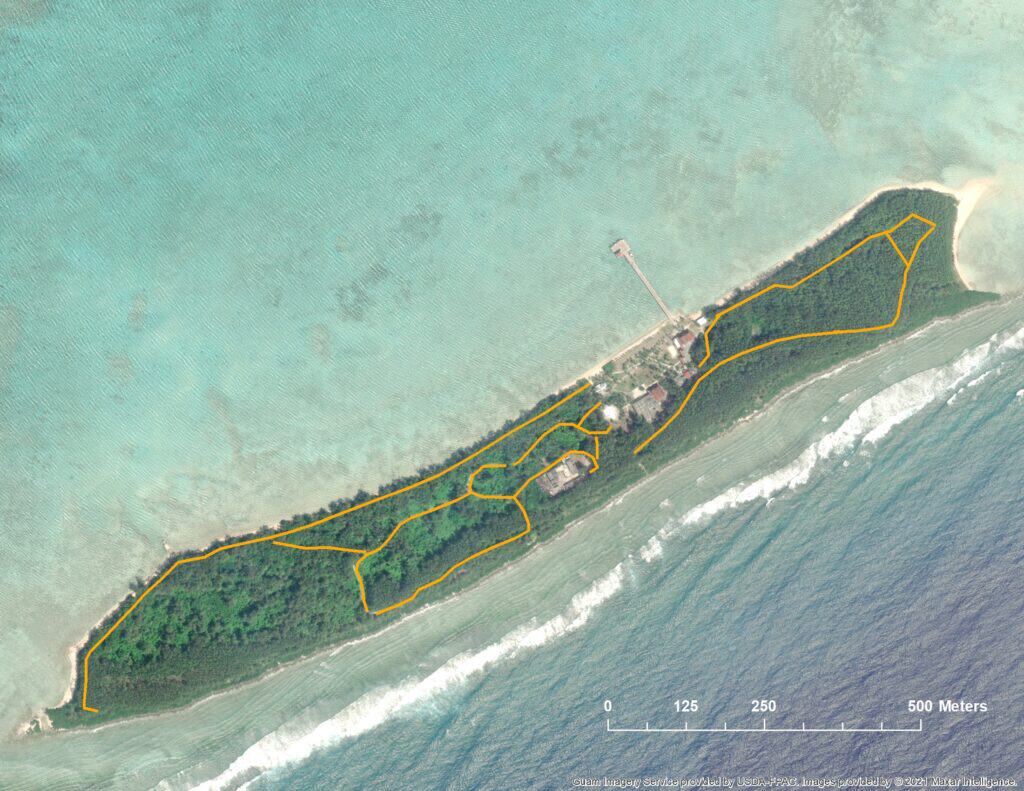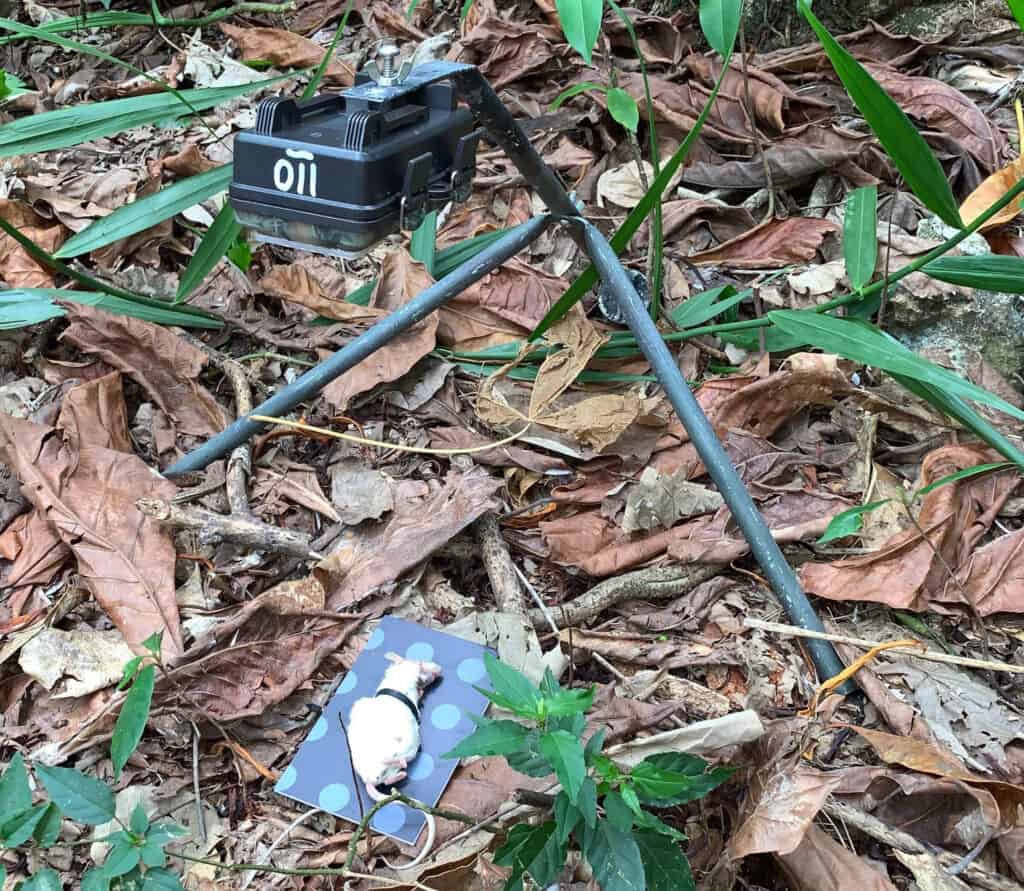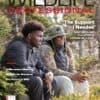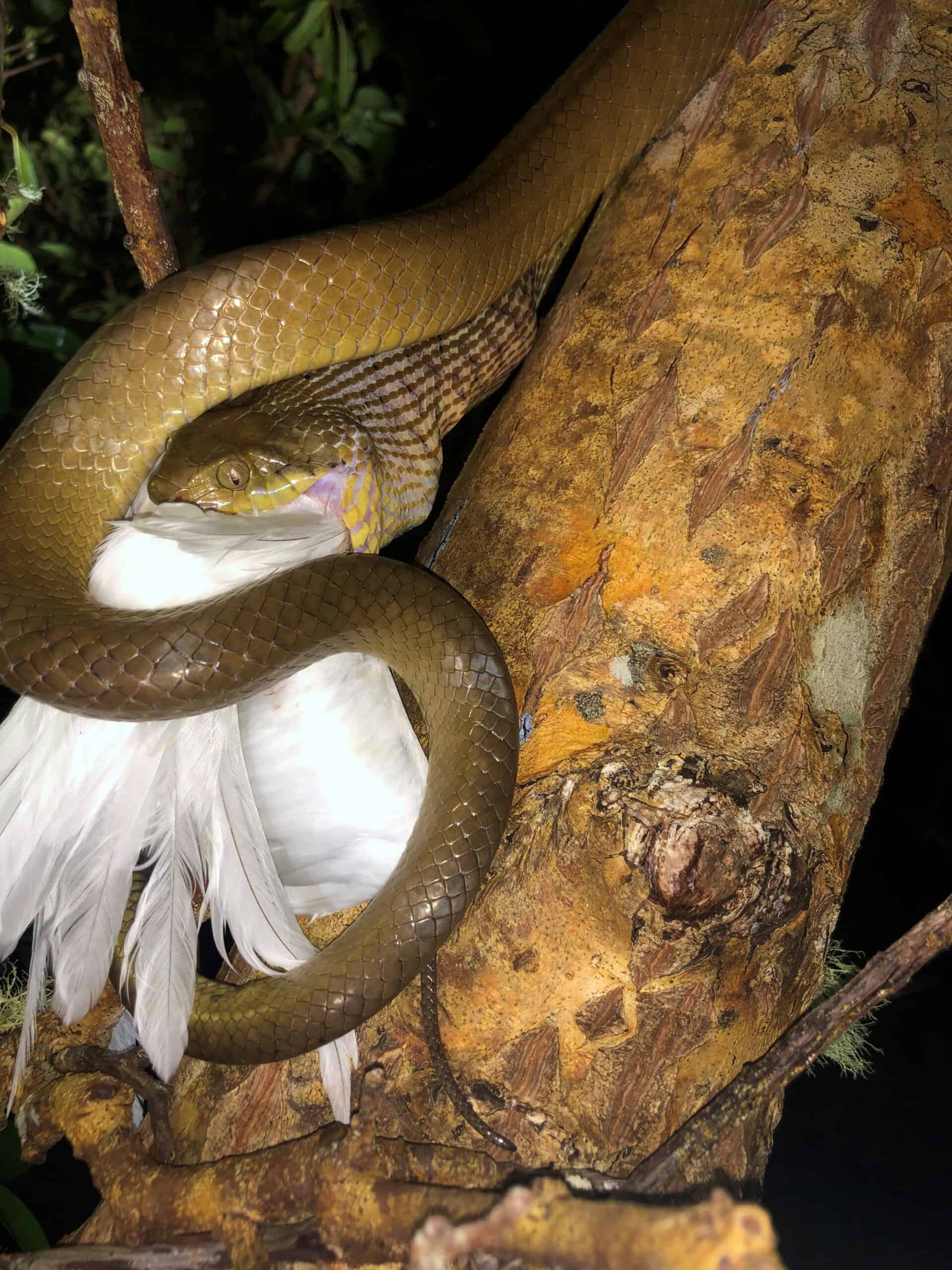Share this article
Wildlife Featured in this article
- Brown treesnake
When brown treesnakes don’t take the bait
Why didn’t tox baiting for the invasive snake work on Cocos Island?
In October 2020, a new population of invasive brown treesnakes was discovered on Cocos Island, a 33-hectare island located about 2.5 kilometers off the south coast of Guam. Cocos Island is a refuge for many lizards and birds, including endangered species, which were extirpated from mainland Guam by invasive predators including brown treesnakes (Boiga irregularis). Several tools and techniques, including baiting and trapping, have been developed and continue to be improved for managing invasive brown treesnakes on mainland Guam.
Researchers with the USDA Wildlife Services’ National Wildlife Research Center worked with WS operations employees in Guam and other partners to evaluate the usefulness of toxic baiting with acetaminophen-treated carrion baits and cage trapping on Cocos Island.

Multiple bait types and bait presentations—including bait put on the ground, suspended in the tree canopy and in four plastic-tube bait station configurations) were evaluated over more than 2,400 bait nights and 10,000 trap nights. All baits were monitored with time-lapse cameras. None of the baits were taken by brown treesnakes. During that time, only one brown treesnake was captured using a trap with a live mouse lure.
“For all practical purposes, baiting and trapping on Cocos Island are ineffective,” said NWRC researcher Dr. Shane Siers. “We know this low level of effectiveness is not a result of low snake density because of our visual searching and hand capturing efforts. We know the snakes are out there.”

Researchers hypothesize that the low success rates are due to an extremely high abundance of preferred live prey, primarily large geckos and birds. Future work on Cocos Island will include the continuation of visual searching and manual removal of snakes, the only method that has thus far been effective. Researchers also plan to evaluate whether the use of live bird lures may more effective than carrion or live rodents.
“These findings do not bode well for managing future island invasions by brown treesnakes. If snakes were to become established in other prey-rich environments, our current baiting and trapping methods may be similarly ineffective,” Siers said. “Preventing the accidental translocation of snakes from Guam remains a critical management strategy.”
For more information, contact NWRC@usda.gov.
Header Image: A brown treesnake eats a white tern (Gygis alba). Credit: Nathan Sablan: U.S. Geological Survey








